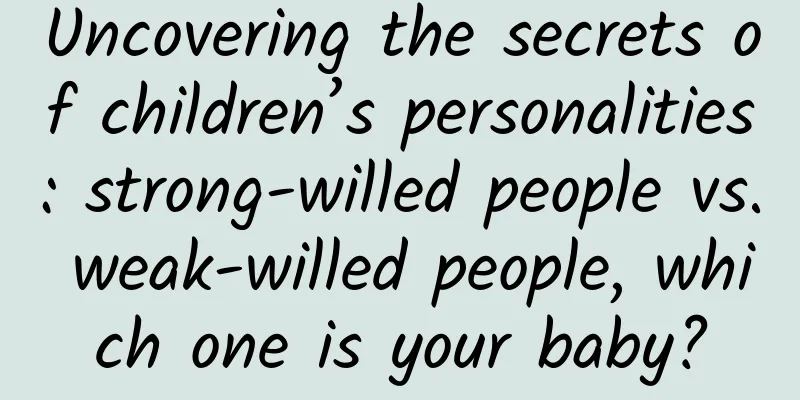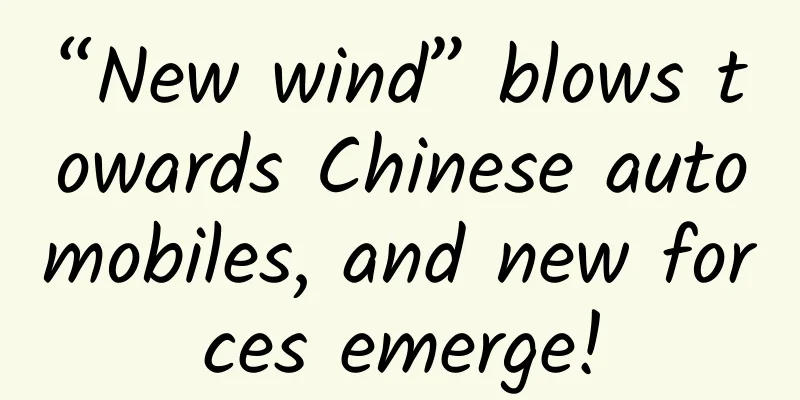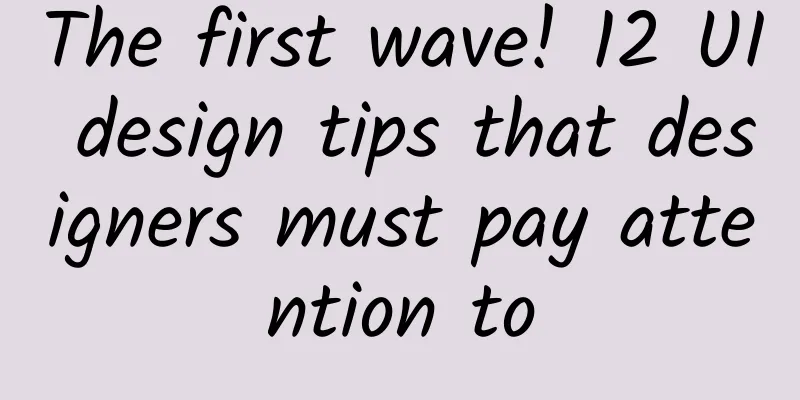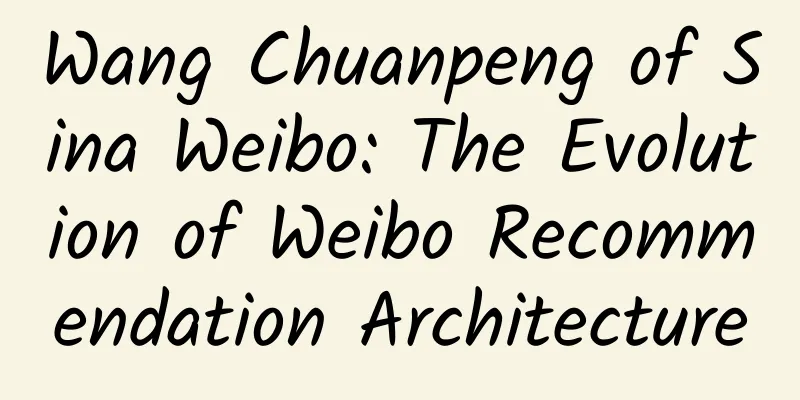#千万IP创科普# Why is the statue in "Black Myth: Wukong" incomplete? Revealing the loss and "return home" of cultural relics
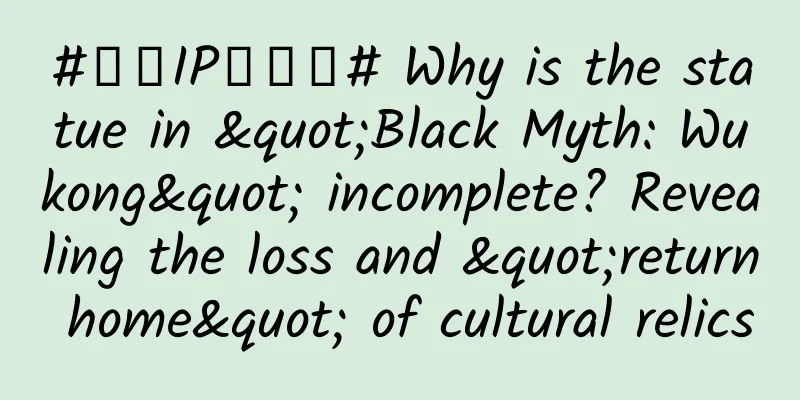
|
Recently, the game "Black Myth: Wukong" has become very popular. Many people are confused when playing the game. Why does the "Bodhisattva" in the game have no head? And with the words of the "Bodhisattva", people have begun to make many speculations. One of the sad statements is that "the 'Lingji Bodhisattva' in the game has no head because the head of the 'Lingji Bodhisattva' in reality was stolen by Western powers and placed in the British Museum." Hang Kan, professor of the School of Archaeology and Museology at Peking University and director of the Yungang Research Institute, said that cultural relics not only have historical, scientific and artistic values, but also emotional values. We admire the beauty of Chinese cultural relics, but also resent the tragic situation after they were looted by foreigners. The fate of cultural relics is linked to the fate of the country. We should understand and recognize the history of looting of Chinese cultural relics in the early 20th century. Explorer and antique dealer Chang Qing, one of the authors of the book "A Hundred Years of Loss of National Treasures", has worked in three major museums in the United States and visited most of the important museums in Europe and the United States. He often sighed in front of the display cabinets of Chinese national treasures. Together with another author Huang Shan, he sorted out and studied the historical facts of the dispersal of Chinese cultural relics in the late 19th and early 20th centuries and the multiple values of the lost national treasures. From the end of the 19th century to the beginning of the 20th century, China did not have a cultural relic law, and the people had no knowledge of cultural relics and did not see their value. This gave foreign explorers the opportunity to "take advantage of the situation". Among these explorers, the most famous was Stein from Britain. In the 1900s, with the support of the Indian and British governments, Stein went to Central Asia for archaeological exploration, leaving his footprints in Xinjiang, Gansu and other places in China. After that, he went back and forth to Central Asia three times, taking away a large number of cultural relics. Among them, more than 300 paintings on paper, silk and linen from the Tang and Song dynasties were unearthed in the Dunhuang Caves. Among them, Stein took more than 200 pieces, which are now in the British Museum; Pelliot of France took more than 100 pieces, which are now in the Guimet Museum in Paris. "Unfortunately, this situation did not attract the attention of local officials at the time. Even when Stein was packing the cultural relics and preparing to ship them away, some officials made great efforts to contact workers for him, provided assistance, hosted banquets for him, and warmly welcomed him to come again next time." Chang Qing said that today, the British Museum has a collection of more than 9,000 ancient manuscripts that Stein obtained from the Mogao Grottoes in Dunhuang in 1907. However, explorers represented by Stein were only the first type of people who caused the outflow of Chinese cultural relics. "He obtained tens of thousands of cultural relics from China, while the British Museum has a collection of more than 8 million cultural relics from all over the world." The so-called "feat" of the explorer aroused great interest among foreign collectors and antique dealers, who were the second and third types of people who caused the outflow of Chinese cultural relics. Many people have heard of the names of Lu Wu Company and Shanzhong Chamber of Commerce, two major antique dealers that played a key role in the outflow of Chinese cultural relics. Lu Qinzhai, the founder of Lu Wu Company, was active in the Western antique world in the first half of the 20th century. Lu Wu Company exported cultural relics to Western countries, especially the United States, for 30 years. Countless national treasures were continuously shipped to Europe and the United States, including the two relief works "Sa Lu Zi" and "Quan Mao Lu" from the Six Horses of Emperor Taizong of Tang's Zhaoling Mausoleum, which are now in the collection of the Museum of Archaeology and Anthropology of the University of Pennsylvania in Philadelphia, USA. Another major antique dealer selling Chinese cultural relics was the Yamanaka Trading Company, which was founded by the Japanese. After 1927, the Yamanaka Trading Company participated in the theft of statues in the Tianlongshan Grottoes in Taiyuan, Shanxi. More than 150 exquisite carvings were stolen from 25 caves excavated during the Eastern Wei, Northern Qi, Sui and Tang dynasties, and the entire grotto complex was basically destroyed. Chang Qing introduced that these antique dealers were active in the first half of the 20th century and had branches all over the world, playing a key role in the outflow of Chinese cultural relics. It can even be said that most of the cultural relics flowing from China to overseas have passed through the hands of these antique dealers. It's hard to go home Chang Qing said that over the past century, about 10 million Chinese cultural relics have been lost overseas. In addition to the more than 1.6 million pieces kept in foreign museums with a clear whereabouts, there are more than 8 million cultural relics in private hands whose whereabouts are unknown. These lost cultural relics are the common wealth of all Chinese people, and behind them are the emotions of the Chinese nation that have lasted for thousands of years. It is the expectation of all Chinese people to let them return home. So far, there are three main ways for China's lost cultural relics to return, namely, purchase, donation and recovery. Data shows that over the past 70 years since the founding of the People's Republic of China, China has successfully facilitated the return of more than 300 batches and more than 150,000 Chinese cultural relics lost overseas through law enforcement cooperation, judicial litigation, negotiated donations, rescue and collection. But even so, the road for cultural relics to "return home" is still long and bumpy. The return requests made by the countries where the cultural relics were lost were either rejected or perfunctorily delayed until nothing came of it. For example, in 2002, many famous Western museums jointly issued the "Global Museum Value Declaration" to resist the demand for the recovery of cultural relics that have been lost abroad. This declaration was clearly opposed by the majority of cultural relics that have been lost abroad, including China. This, to some extent, reflects the difference in thinking between China and foreign countries in dealing with cultural relics. "In the eyes of the Chinese, cultural relics contain national spirit and emotions, belong to the country, and the export of cultural relics is also prohibited. But in the eyes of foreigners, cultural relics are collectibles with appreciation value, which can be freely circulated in the market, and import and export are still free. In the old days, China did not have a cultural relic protection law. Whoever bought it owned it, so it was difficult for them to accept the request for return." In addition, it is extremely difficult to promote the return of cultural relics through official channels. The biggest obstacle is that foreign museums have great autonomy, and the government is unable to interfere in the management of museums or the whereabouts of cultural relics. The long road back The long journey of the lost cultural relics back home reflects that lost history and also puts the urgency of the return of the cultural relics back before the public. Chang Qing said that international conventions have limitations, and we can only hope that the relevant countries will take the initiative to return the cultural relics, but we cannot give up on expressing our views. For example, in the past, the British Museum had a special exhibition hall dedicated to displaying the cultural relics that Stein took from China, and also posted photos of Stein and introduced how he got the cultural relics from China. my country was very dissatisfied with this, and the museum later removed the introduction about Stein and only exhibited the cultural relics he took away. After 1949, especially after the reform and opening up, many scholars began to study the cultural relics lost overseas and roughly figured out the situation of the cultural relics lost overseas. In the past 20 years, through the efforts of the state and patriots, some national treasures have returned to the motherland. In the past decade, more than 1,800 pieces/sets of lost cultural relics have returned to the motherland. In 2021, Ms. Susanna Flatus from California, USA, donated two Ming Dynasty pottery figurines to my country, which were collected by the Shanghai Museum. The State Administration of Cultural Heritage hosted a ceremony for the donation and collection of cultural relics; in 2019, entrepreneur Stanley Ho officially donated the bronze statue of a horse head that had been lost for 160 years to the State Administration of Cultural Heritage. The Old Summer Palace welcomed the first important cultural relic lost overseas to "return home"; in 2018, Chinese Americans Wang Chunjie and his wife donated a statue of the Heavenly King in Cave 7 of the Yungang Grottoes from the Northern Wei Dynasty to the Shanxi Museum. This is the second time that the two have donated national treasures from the Yungang Grottoes back to Shanxi. Today, countless cultural relics that have been lost overseas are returning home in this way. |
Recommend
Tesla's "free service" of giving away charging stations when buying a car slaps someone in the face
It seems that Tesla has already sensed the policy...
Southwest Associated University Study Diary - Fan Deng Reading
Southwest Associated University Study Diary - Fan...
WeChat cloud storage charges kill three birds with one stone, but it is "going against the trend"
Monopoly is not just limited to malicious competi...
Wilson: Monthly report on new energy vehicle industry in April 2024
01. Sales performance Overall performance of the ...
How to promote and attract traffic to Xianyu? The practical method of attracting traffic to Xianyu with coupons is revealed!
Xianyu is now a traffic-generating platform that ...
Is the popular online trend of “using oil to nourish the skin” really useful or just a waste of money?
In winter, the weather is dry and the skin is tig...
How to formulate information flow promotion strategy?
Information flow advertising is the new darling o...
Has the new media dividend passed? You don’t know how to spread content!
We often say that the bonus period of WeChat new ...
Faraday Future Financial Report: Faraday Future's full-year operating loss in 2024 narrowed by 47.7% year-on-year to US$149.7 million
Recently, Faraday Future (NASDAQ: FFAI, FF for sh...
What can UCloud do to accelerate Chinese companies’ overseas expansion?
The original intention of globalization strategy ...
The emotional course of Cang Ge, which is popular on Douyin, is worth 3980 yuan (full version of video tutorial)
Introduction to the complete version of the Cangg...
The battle for product placement in the chicken-eating game has begun. Which brand is the hidden chicken-eating king?
I believe everyone must have seen JD.com’s Double...
The cause of the accident was revealed! Why did the subway suddenly break down?
Audit expert: Hu Qizhou Associate Professor, Scho...
How did we gain 1.5 million new WeChat followers through one event?
When friends talk about Tencent's products, t...
Google to release Android Pay
Editor’s Note: Google launched a similar payment ...
